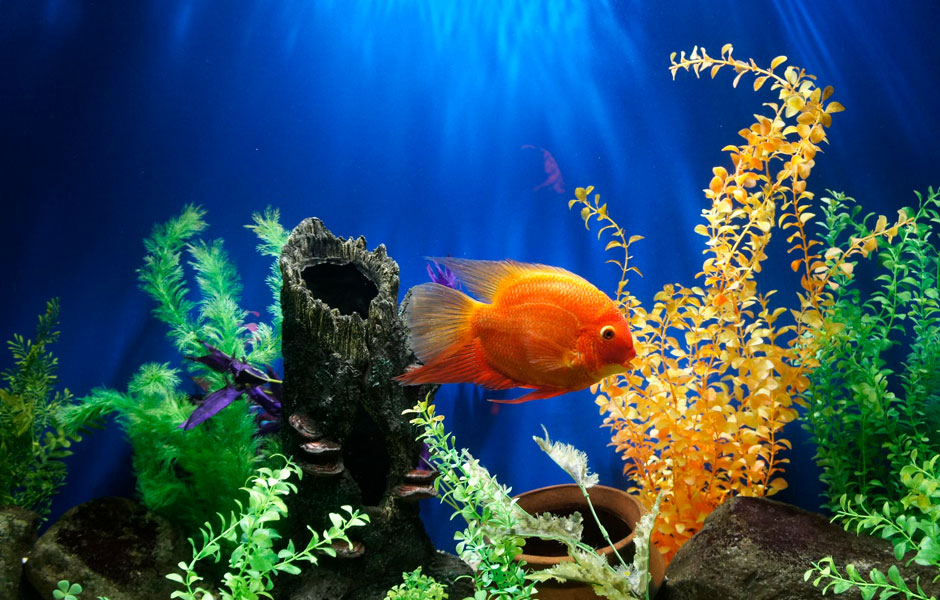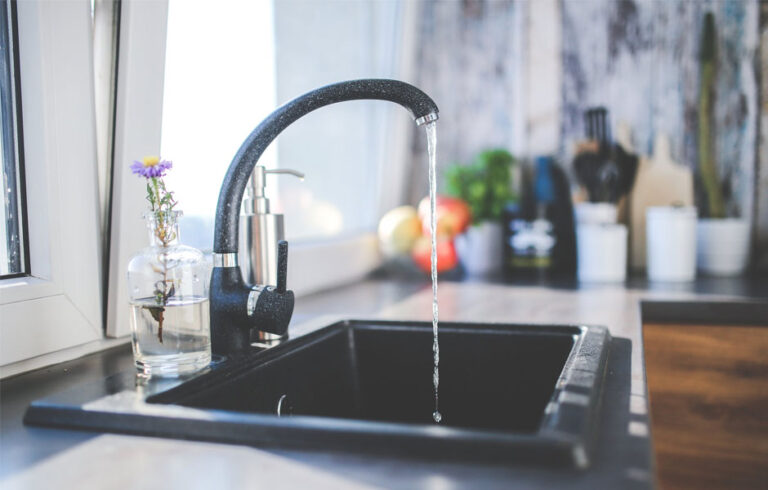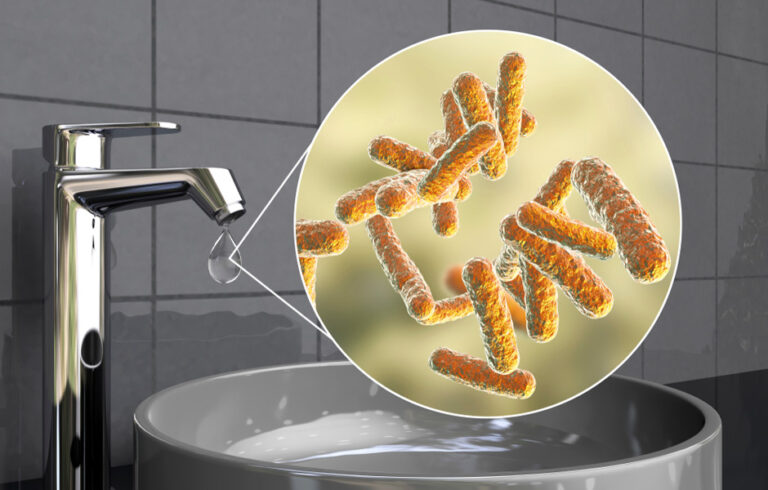Aquariums are a popular addition to many living rooms across the globe. They can be both beautiful and relaxing to watch. If you are a fish enthusiast, you know the importance of keeping your fish tank clean and healthy.
One of the best ways to do that is by using reverse osmosis water for aquariums. However, if you are new to the hobby, keeping your fish tank clean and free of algae can be challenging without using harsh chemicals. This is where reverse osmosis water is so popular.
RO water for an aquarium is a great way to remove toxins and impurities from the water, making it safe for fish and other aquatic pets. In addition, it also helps to maintain the health of your fish and plants. It also has a stable pH level.
This article will discuss the benefits of reverse osmosis water and how to choose the right filter for your aquarium. It will also cover topics such as ph-value for aquariums, contaminants in aquariums, drawbacks of other water sources for fish tanks, and RO water filter buying options.
What is reverse osmosis, and it’s benefits for aquariums?
Reverse osmosis is a process when water passes through a semipermeable membrane, leaving impurities and dissolved minerals behind. The result is clean water free of toxins, heavy metals, and other harmful contaminants, making it ideal for an aquarium.
Reverse osmosis systems are becoming increasingly popular in the aquarium industry due to their many benefits. Some of the benefits of using reverse osmosis water for aquariums include:
- Extremely pure water helps keep the aquarium clean and clear:
Since reverse osmosis water contains very few dissolved solids, it is less likely to cause cloudy water or promote the growth of algae. - Fewer dissolved solids mean less chance of fish sickness:
Too many dissolved solids in the water can be toxic to fish and cause illness. Reverse osmosis water contains fewer dissolved solids, making it safer for fish. - Helps to maintain a stable pH level in the aquarium:
The pH level is a measure of the acidity or alkalinity of the water. Reverse osmosis water can help to maintain a stable pH level in the aquarium because it is less likely to contain dissolved solids that can alter the pH level. - Removal of harmful contaminants that could harm or even kill fish:
Contaminants such as chlorine, lead, and mercury can be toxic to fish and other aquatic creatures. Reverse osmosis systems remove these contaminants from the water, making it safe for fish.
Now that we know the benefits of reverse osmosis water for aquariums, let us look at how to choose the right filter.
How to choose a reverse osmosis water filter for your aquarium?
There are a few things to consider when choosing a reverse osmosis water filter, such as:
- The size of your aquarium:
The size of your aquarium will determine the flow rate and capacity of the reverse osmosis system you need. Reverse osmosis water filters come in a variety of sizes, so it is important to choose one that is suitable for the size of your aquarium. - The type of fish you have:
Some fish are more sensitive to impurities in the water than others. If you have sensitive fish, such as betta, goldfish, tetra, discus, or angels, you will need a reverse osmosis water filter along with a specific water temperature and pH level. - The number of fish in your aquarium:
The more fish you have, the more waste they produce. This can increase the number of dissolved solids in the water and make it more difficult to maintain a stable pH level. Therefore, if you have a lot of fish or other aquatic pets, you will need a reverse osmosis system with a higher flow rate and capacity. - The type of aquarium you have:
Each type of aquarium (freshwater, saltwater, or reef) has different needs when it comes to using reverse osmosis water. For example, reef aquariums need a reverse osmosis filter with a higher purity rating to remove the impurities that can harm the delicate corals and other marine life.
A reverse osmosis water filter is an investment
The price of an RO system will vary depending on the size, capacity, and features of the system. Therefore, it is essential to set a budget for your aquarium so you can choose a RO system that fits your needs and budget.
In addition, reverse osmosis systems require very little maintenance, so you will not have to worry about spending much time and money on upkeep.
Monthly RO water subscription as an option
If all this talk about reverse osmosis water filters makes you feel overwhelmed, do not worry. You can always sign up for a monthly reverse osmosis water subscription. This is an excellent option if you do not have the time or knowledge to set up your reverse osmosis system.
Many companies offer reverse osmosis water subscriptions, so be sure to do your research to find one that is reputable and has good reviews.
Now that we have covered the benefits of reverse osmosis water for aquariums and how to choose the right filter, let us look at some other water sources you can use for your fish tank.
What are some other water sources for aquariums and their drawbacks?
Apart from reverse osmosis water, you can use a few other water sources for your fish tank. Let us take a closer look at them.
Tap Water
One of the main drawbacks of using tap water for aquariums is the high levels of chlorine and chloramine, which can be toxic for fish. Chlorine is added to municipal water supplies to kill bacteria, while chloramine is a combination of chlorine and ammonia. While it is beneficial for human health, it can be detrimental to fish and other aquatic organisms.
Chlorine can cause fish several health problems such as eye infections, skin lesions, and breathing issues, sometimes causing death. Additionally, chlorine can affect the pH levels in aquariums, making them more acidic and potentially harmful.
Also read: Tap water contaminants
Bottled Water
The main disadvantage of using bottled water for aquariums is that it can be costly in the long run. It can be challenging to find a good source of bottled water that does not contain many chemicals.
Another notable downside is that it may not contain all the nutrients your fish need to thrive, leading to health problems. Bottled water for aquariums is not always environmentally friendly since it can create a lot of plastic waste.
Distilled water
Distilled water is not an ideal choice for use in an aquarium for various reasons. One reason is that distilled water is often too pure and lacks essential minerals that fish need to survive, sometimes leading to deficiencies in the fish. This can lead to health problems for the fish in the aquarium.
Moreover, distilled water is not a good source of electrolytes. As a result, your fish can become dehydrated and lose their scales. Dehydration due to distilled water can also leach essential minerals from the fish’s body which can cause the fish to become weak and susceptible to diseases.
Also read: Know more about distilled and de-ionized water.
Rainwater
The disadvantage of utilizing rainwater for aquariums is that it might hold pollutants and particles from the air. Rainwater may also include a variety of contaminants. This is because rainwater can pick up particles from the atmosphere and ground, including hazardous chemicals. Dust, pollen, and leaves are also possible pollutants, making it impossible for fish to survive.
In particular, nitrates and phosphates found in rainwater can be dangerous in high concentrations. They can cause health problems to the fish and harm their delicate systems.
One example is Ichthyophthirius multifiliis, a ciliated protozoan that can cause white spot disease in fish. Ichthyophthirius multifiliis live in the water and are transferred to fish when they contact the parasite.
Another contributing factor to health problems in fish due to rainwater for aquariums is the presence of algae. Algae can proliferate in warm, moist environments and reduce the water quality, leading to severe health issues in the fish. In addition, the algae in an aquarium can consume a lot of oxygen at night, suffocating the fish.
Algae can also produce toxins and clog up the filters and pumps in the tank causing harm to fishes and other aquatic life.
Softened water
Softened water can be too salty for fish, causing them to become dehydrated or even die due to excessive salt. In addition, it often has high chlorine concentrations and other chemicals that are harmful to fish. Moreover, saltwater can leach calcium and magnesium from your tank’s decorations and substrate, which can also be dangerous.
Softened water for aquariums can be hazardous because it can raise the pH levels in the tank, making it too alkaline for fishes to survive as the osmotic balance of the fish is disrupted, which can lead to health problems such as electrolyte imbalance. It can also cause cloudiness in the water and promote the growth of algae.
Water from another aquarium
When you pour water from one aquarium into another, you introduce a new environment for your fish. It can contain parasites or other harmful organisms that can infect your fish, making it difficult for them to survive in the new water conditions.
Aquariums are fragile ecosystems that need specific water parameters to thrive. Water from different aquariums can have different chemical compositions, disrupting the delicate balance of chemicals in your tank, leading to problems that cause your fish to get sick or even die.
Lake or river water
If you are using water from lakes and rivers to fill your aquarium, you may be introducing harmful chemicals and minerals into your tank. One of the best ways to avoid these health problems is to use reverse osmosis water.
Several health problems can occur in aquarium fish due to the use of lake water. Some common issues include ich, velvet, and fin rot. You can treat these problems with medication, but it is important to identify them early to prevent them from becoming more serious.
Water from lakes and rivers can be high in phosphates and other pollutants harmful to fish and other aquatic lives. Additionally, the pH of lake water can vary widely, which can also be detrimental to fish. Finally, the water has a high chance of containing dissolved minerals and metals, causing problems for aquatic life.
Trust the reverse osmosis process
Reverse osmosis water is produced by forcing water through a very fine membrane. This process removes impurities from the water and leaves behind only clean, fresh-tasting reverse osmosis water.
Reverse osmosis is one of the most effective ways to purify water. It is often used in large-scale commercial and industrial applications. Still, you can also use it in your home aquarium.
So if you are looking for a way to keep your aquarium water clean and healthy, reverse osmosis is a great option. Here is everything you need to know about using reverse osmosis water for your aquarium.
Harmful chemicals removed by reverse osmosis
Some of the chemicals removed by RO water filter that cause health problems in fish tanks are:
Nitrate
Nitrate is a common problem in aquariums, produced by the decomposition of fish waste or when live plants and algae break down. This can be harmful to fish in high concentrations. RO water helps reduce the levels of Nitrate in aquariums by removing many of the dissolved solids that can contribute to the formation of Nitrate, making it a safe and healthy option for your fish.
Phosphate
Phosphate forms in aquariums through aquarium supplements and fish food. Other phosphate sources can be tap water, live rock, and aquarium substrates such as coral sand, which contains high phosphate levels. Reverse osmosis water helps reduce phosphate levels in aquariums, creating a healthier environment for aquarium plants and fish.
Chlorine
Chlorine is a common disinfectant that is added to municipal water supplies. However, it can be harmful to fish in high concentrations. Chlorine is also formed when phosphate molecules bond with chlorine atoms, which usually happens when aquarium water is exposed to sunlight or other sources of ultraviolet light. Reverse osmosis removes chlorine from aquarium water, making it safe for your fish.
Ammonia
Ammonia is produced when fish waste decomposes and when uneaten fish food breaks down. Ammonia is harmful to fish because it is toxic and can cause gill damage, leading to respiratory distress. Reverse osmosis water removes ammonia from aquariums creating a healthier environment for fish and other aquarium inhabitants.
Magnesium
Magnesium can be introduced in your fish tank by adding aquarium salt, which all aquariums need to maintain healthy water chemistry. It can also be formed through the process of coral reef growth. As corals grow, they excrete a calcium carbonate skeleton. This calcium carbonate skeleton reacts with magnesium in the water to form new magnesium carbonate. Reverse osmosis water can help remove magnesium from aquariums which helps stabilize aquarium pH levels.
Sulfate
Sulfate is a common element in aquarium water. It is formed when sulfurous acid reacts with water or by breaking down organic matter. Sulfate-reducing bacteria consume sulfate and produce hydrogen sulfide. This can cause a fish’s gills to become irritated and lead to black mold development. reverse osmosis also removes sulfate from aquarium water
Calcium
Calcium is a common element in aquarium water. It is necessary for the growth of fish bones and scales but can be harmful to fish, sometimes clogging their gills. Reverse osmosis water effectively removes calcium from aquariums because it has a very high purity level. This means that there are no dissolved minerals in the water, which would otherwise contribute to calcium buildup.
Silicate
Silicate is present in water because it is a naturally occurring compound. You can find it in rocks and minerals, and it is also a by-product of specific industrial processes. It is one of the most common minerals in aquariums and can be found in fresh and saltwater tanks. Reverse osmosis will significantly reduce the amount of silicate in your aquarium water, creating a healthier environment for your fish.
Significance of PH-level in water for aquarium
One of the most important aspects of aquarium care is ensuring the water’s pH levels are correct. PH measures how acidic or alkaline a substance is, and aquariums require a specific pH range to maintain healthy fish and plant life. PH levels that are too high or too low can be deadly to fish, so aquarium owners must be aware of the significance of pH in water.
Most tap water has a pH level of around 7, which is neutral. Aquariums can have a pH level anywhere from 6 to 8. Still, it is crucial to stay within the recommended range for the specific fish and plants you are keeping. If the pH level falls outside this range, the aquarium will need to be adjusted.
Since the water from most sources is either untreated or receives a treatment that is not suitable for our aquatic pets, you need RO water for your aquarium.
Reverse osmosis water for aquariums can help to stabilize the pH levels in your fish tank. This is because RO water has a very low concentration of dissolved minerals, which means that it is less likely to affect the pH balance of your fish tank.
Fish require stable pH levels to thrive. Reverse osmosis water with a stable pH level will lessen the stress on fish and make their environment more pleasant.
Aquarium owners can also adjust the pH level of their aquariums in a few ways. One is by adding chemicals such as aquarium buffers to the water. These buffers help maintain the aquarium’s pH level and keep it from fluctuating. Another way to adjust the pH level is by adding plants to the aquarium. Plants help to filter the water and keep the pH levels stable naturally.
FAQ
Where to buy RO water for the aquarium?
Reverse osmosis water filters can be found online and at most pet stores. When shopping for a reverse osmosis water filter, compare prices and read reviews to find the best reverse osmosis water filter for your aquarium. If you are looking to rent an RO water filter, check our range of products including undersink RO, countertop RO and RO full-stand dispensers.
Is RO water safe for an aquarium?
Yes, reverse osmosis water is safe for aquariums. Reverse osmosis water can be beneficial for aquariums because it can help to remove harmful contaminants from the water. Reverse osmosis water can also help to stabilize the pH level in your aquarium.
What is the best reverse osmosis system for an aquarium?
The best reverse osmosis system for an aquarium is the one that fits your specific needs. The best RO water for an aquarium depends on a few factors, such as the size of your aquarium and the type of fish you have. It is important to choose a reverse osmosis system specifically designed for aquariums. Contact us for more information.
I have an aquarium with fish that require high pH levels. Can I use reverse osmosis water?
Yes, you can use reverse osmosis water in aquariums with fish that require high pH levels. However, you will need to remineralize the water to raise the pH level. You can do this by adding a reverse osmosis water filter with a built-in remineralization cartridge. Alternatively, you can add a remineralization solution to the reverse osmosis water.
Can I use tap water in my aquarium?
It is not recommended to use tap water in your aquarium because it can contain harmful contaminants that could harm or even kill your fish. If you must use tap water, make sure to let it sit for 24 hours, so the chlorine has a chance to evaporate. However, using reverse osmosis water is a great way to remove these contaminants and provide your fish with clean, pure water.
How often should I change RO water for my aquarium?
Reverse osmosis water filters typically need to be replaced every 12-15 months depending upon the water quality in your area. It is also essential to check the manufacturer’s recommendations for your specific reverse osmosis water filter. However, when you sign up for the monthly subscription option, the filter change/replacement is done for free.
How long does reverse osmosis water last in an aquarium?
Reverse osmosis water can last for up to 2-4weeks depending upon the size of the tank and the number of fishes in the aquarium. However, it is important to test the water quality regularly and make sure the pH level is stable. If the pH level starts to fluctuate, it is time to change the reverse osmosis water.
Conclusion: Reverse osmosis water is one of the best choices for aquariums because it provides a stable pH level and removes harmful contaminants keeping your fish healthy and happy. However, reverse osmosis water filters need to be replaced every 12-15 months depending on your aquarium size and usage.
If you do not want to buy a RO water filter, you may rent one instead on a monthly subscription basis.




